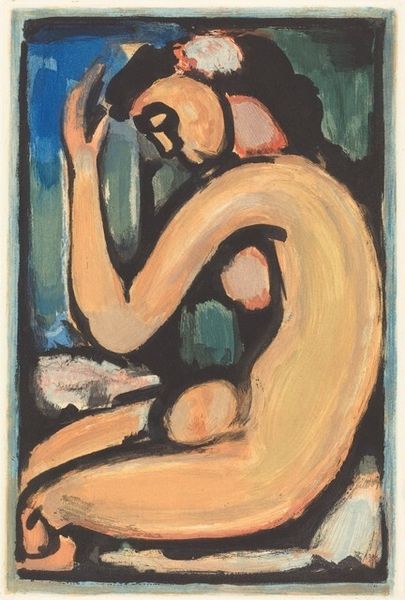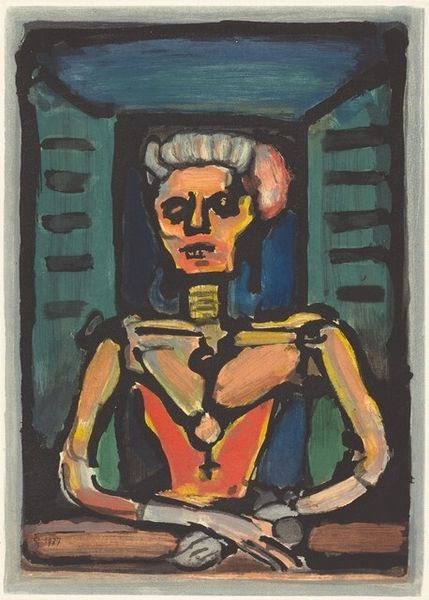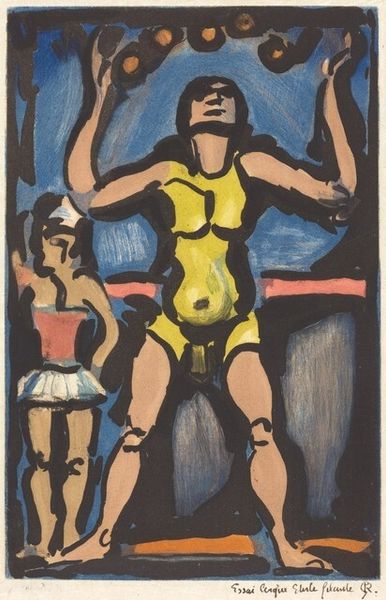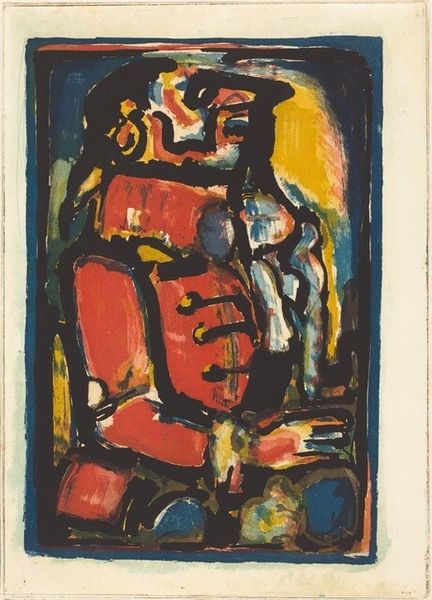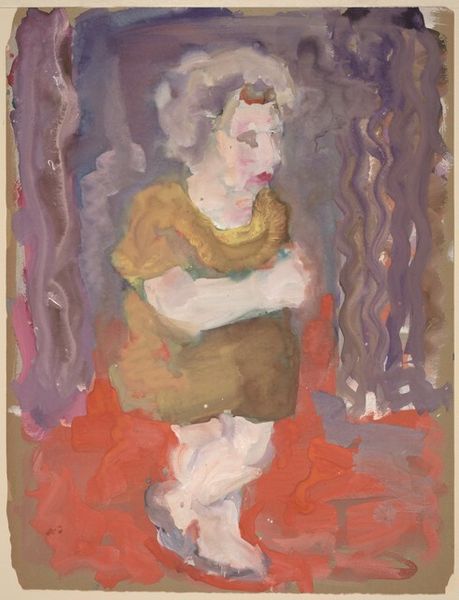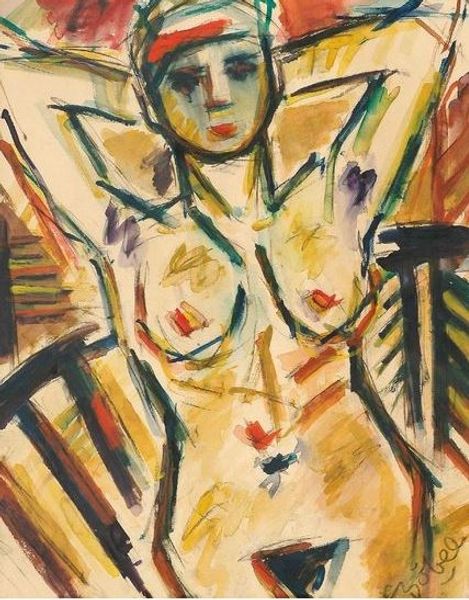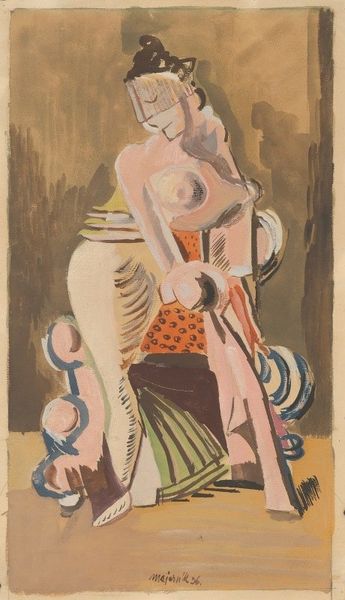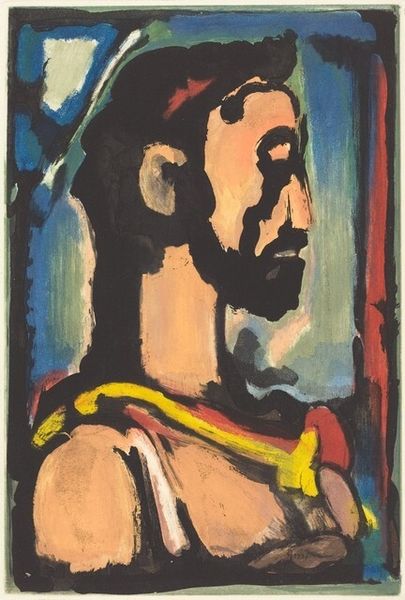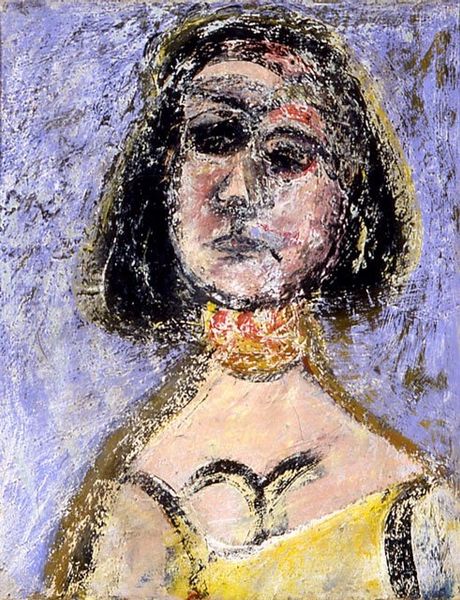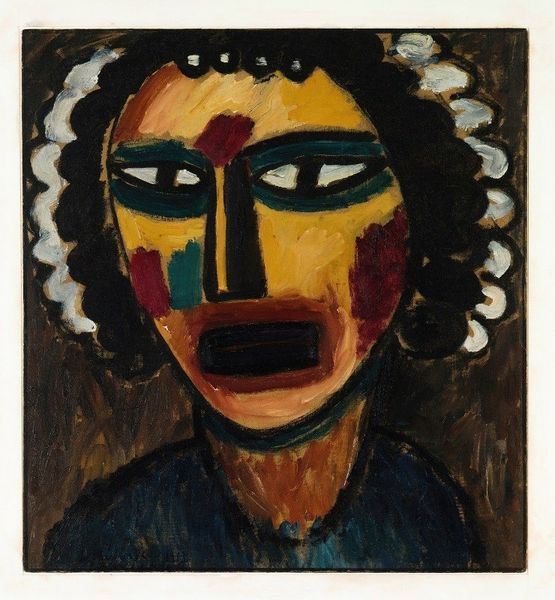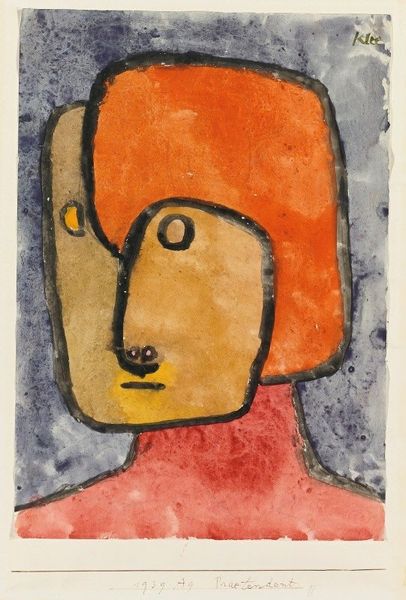
Copyright: National Gallery of Art: CC0 1.0
Curator: Georges Rouault’s “Courtisane aux Yeux Baisses,” likely created between 1936 and 1938, presents us with a complex and challenging portrait. The title translates to “Courtesan with Lowered Eyes.” Editor: My initial reaction is one of unease. There’s something about the heavy lines and the almost mask-like quality of the face that feels confrontational, despite her downcast gaze. What is it made from, this artwork? Curator: The piece employs mixed media, incorporating painting and printmaking techniques. Rouault often combined these methods to create a rich, textured surface that reinforces the emotional intensity. The bold black outlines surrounding flattened planes of color recall stained glass. Editor: Knowing it’s a print really draws me to consider its production. The layering of print and paint points to a labor-intensive process. How might this affect how we perceive the subject, especially given that it represents someone from an often marginalized segment of society? Curator: That’s a vital point. Rouault was deeply engaged with social issues, and his depictions of prostitutes and other marginalized figures often carry a sense of moral judgment mixed with empathy. He was highly critical of the decadence of the wealthy classes, yet compassionate toward those they exploited. Editor: This resonates with the material properties of the print itself. Printmaking can be perceived as accessible art, designed to reach wider audiences beyond a certain class. Perhaps Rouault critiques the commercial commodification of the courtesan. Curator: The caricature-like presentation lends to that critique. She becomes an allegorical representation. He doesn't create beauty to seduce viewers; instead, we are forced to confront an individual within the constraints placed upon her by society. Editor: Exactly, and the deliberate roughness of the textures further resists romanticizing the subject. The work prompts consideration of her social and economic positioning, as well as her personhood and labor as it intersects with materials, access, and audience. Curator: Absolutely. The politics of representation were incredibly important to Rouault, and “Courtisane aux Yeux Baisses” exemplifies his engagement with the societal gaze and the human condition. It reminds us that portraits are not simply likenesses but complex cultural artifacts. Editor: So, reflecting on this work through the lens of materials, production, and social standing urges us to ask, what is Rouault ultimately selling us? Is it empathy, or something more uncomfortable? It is a provocative thought.
Comments
No comments
Be the first to comment and join the conversation on the ultimate creative platform.


